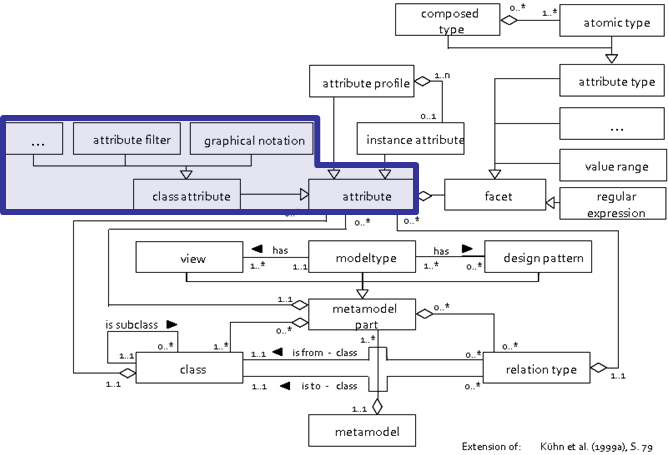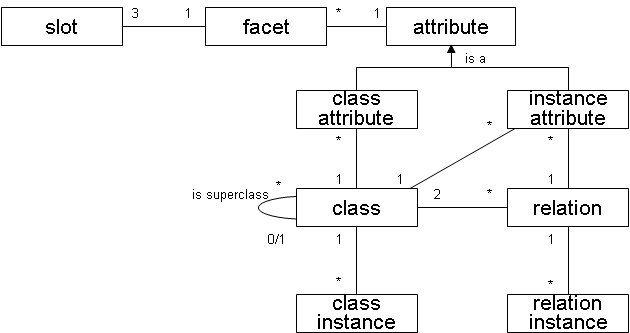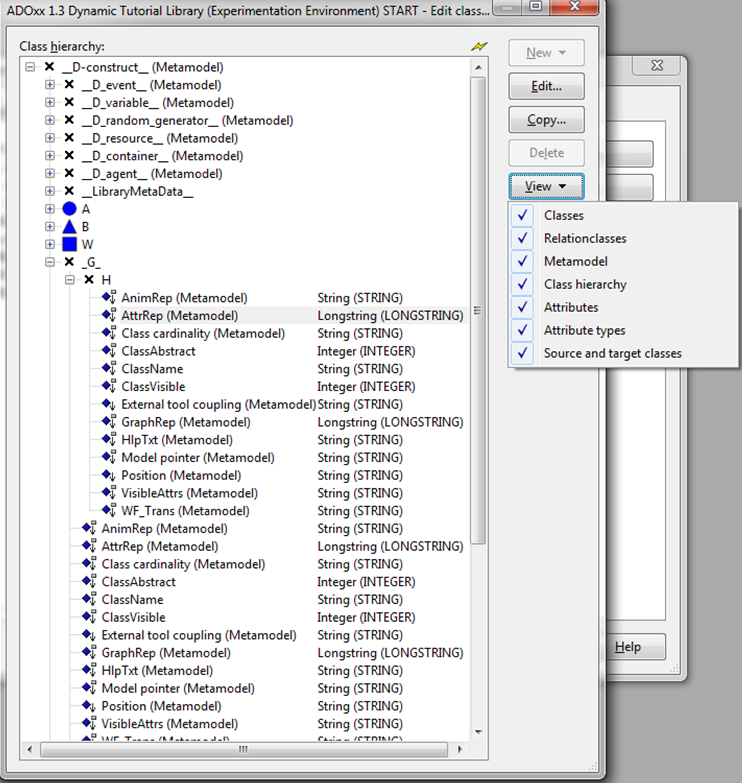ADOxx Documentation
Theory - Hands-On - Scenarios - Community - Development Tools
 Theory
Theory
Class Attribute and Attribute
The following subsections focus on the implementation attributes and class attributes for classes and relation classes.

Meta Model of Meta Modelling Language: Classes and Relations
Definition: Data Object Model
- A Facet has exactly three properties: a name, a type and a value. Every one of these three properties is saved in one slot. Possible facet types are STRING, INTEGER and DOUBLE.
- Attributes define certain properties of classes or relation classes. Every attribute consists of at least three facets: a namefacet (name: "Name", type: STRING, value: "..."), a type facet (name: "Type", type: INTEGER, value: [STRING, INTEGER, DOUBLE, LONGSTRING, DISTRIBUTION, EXPRESSION, TIME, ENUMERATION, ENUMERATIONLIST, PROGRAMCALL, INTERREF, RECORD, PROFILEREFERENCE]) and one valuefacet (name: "Value", type: [STRING, INTEGER, DOUBLE, RECORD], value: "...").
- Every attribute has an additional facet called "AttributeHelpText" which contains user help. Depending on the type of the attribute, additional facets may be defined.
- Attributes can be either class or instance attributes. Class attributes receive one value for every class. Instance attributes receive one value of each instance or relation.
- A Class derived from another class is called subclass and inherits all attributes that are defined in the class from which it is derived. A class from which other classes are derived is called superclass. Relationclasses (or just relations) can not be inherited. Relations are always defined between exactly two classes: one source and one target class.
Every object is identified by a unique id. The following chart shows the relations between different objects, used to define concepts like class, relation, instance, attribute ...

Dependency Class <-> Attribute <-> Facet -> Slot
Views of the class hierarchy

Classes
All visible classes will be shown.
Relation classes
All available relation classes will be shown.
Metamodel
All classes will be shown.
Class hierarchy
All classes will be shown with their inheritance in a hierarchy.
Attributes
The attributes of the (relation-)classes will be shown.
Attribute types
The type of each attribute will be shown.
Source- and Target-classes
Shows the endpoints for each relation class, i.e. between which classes it can be used.
Icons in ADOxx class hierarchy management
 | Class (the icon shows the graphical definition of the object and can therefore vary) |
 | Class (without a graphical definition) |
 | Attribute |
 | Attribute (inherited from another class) |
 | Class attribute |
 | Class attribute (inherited from another class) |
 www.adoxx.org
www.adoxx.org

